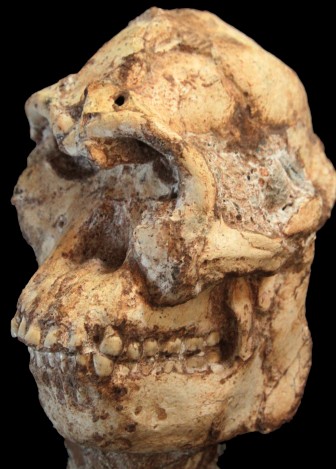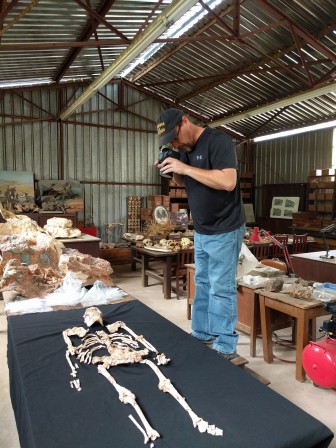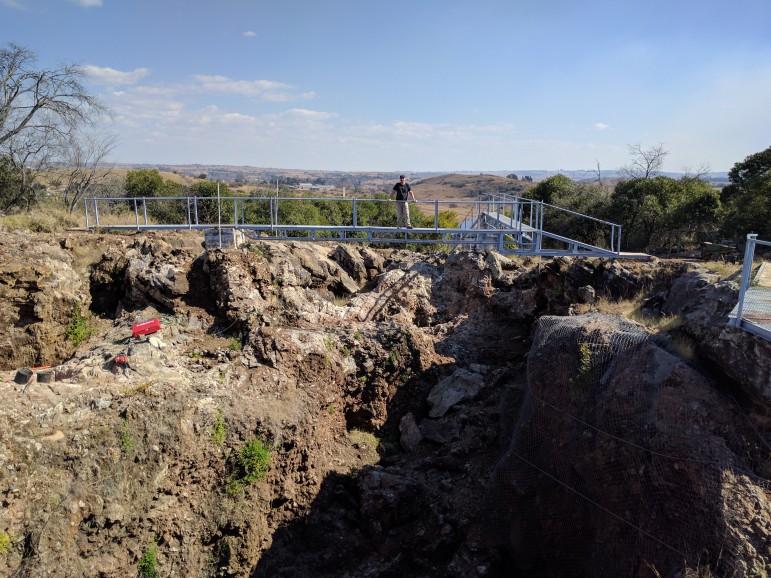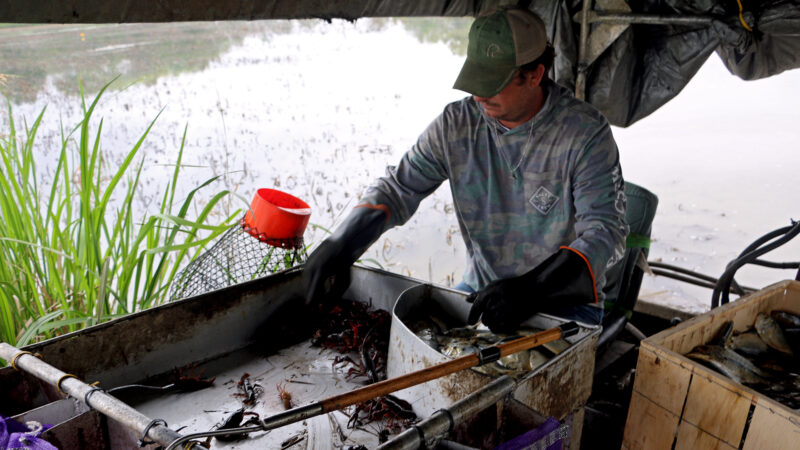“Astonishing” Find Could Be New Pre-Human Species
Last month, scientists in South Africa revealed “Little Foot,” a three-million-year-old pre-human skeleton that could tell us a lot about ourselves. A Birmingham-Southern College scientist is helping to analyze this potential new species, but before we tell you about the present, let’s take you back … a little.
It’s the 1920s. Miners are blasting away in huge caves near Johannesburg. Shattered rocks litter the scene. Some have fossils in them, but the miners don’t care.
Now jump to the 1990s. A researcher named Ron Clarke finds some of those remains in boxes at a university. There were tiny foot bones – that’s where the name “Little Foot” comes from – and a tibia, or a shin bone. People had thought they were from cows, but Clarke saw otherwise.
“He noticed on a tibia that it was broken at the very top – it was a fresh break,” says Birmingham-Southern College anthropologist Jason Heaton. “He asked two of our fossil preparators if they would go and find – in this gigantic, underground, dark cave – a cross-section of that bone. And so they took handheld lamps, and within two days, they found the cross-section, and they were able to find out exactly where Little Foot’s skeleton was.”
Battling some very stubborn rock, Clarke and his team eventually dug out one of the oldest and most complete hominid skeletons ever found. They’ve dated Little Foot at about 3.67 million years – at least as old as the famous “Lucy” skeleton from east Africa. And Little Foot is almost 90 percent whole, compared to Lucy’s 40 percent.
“The reason Little Foot is going to be so dramatically important to what we do is the fact that it’s so complete,” says Heaton, “because when you look at early human prehistory, we only have 10 or 11 partial skeletons.”
That’s because smaller, more delicate bones usually don’t last millions of years, even when they haven’t been chewed up by carnivores. So comparatively, Little Foot is in great shape. And the team thinks it might be a new species. They’re calling it Australopithecus prometheus.
“They’re more ape than human, but they are filling in that gap of a missing link,” Heaton says. “Its anatomy is right between us and chimpanzees. It’ll start filling in how some of these species are related to each other.”
Ian Tattersall, a curator emeritus of anthropology at the American Museum of Natural History, is not involved with the find but agrees it’s a major puzzle-piece:
“I would not be in the least surprised if it were a new species,” he says.
After two decades of digging and reconstruction, Little Foot is now in a university vault in South Africa. But thanks to CAT scans and 3-D printing, the analysis continues on several continents, including in Jason Heaton’s lab at Birmingham-Southern. He says he can’t give away too much, but the Little Foot team plans to publish two dozen papers starting this year.
Ian Tattersall says he looks forward to detailed descriptions of Little Foot. And looking back, he’s thankful Ron Clarke happened to find those boxes.
“It is one of the most astonishing stories of discovery ever, in the walls of this gigantic, dark, difficult cave,” says Tattersall. “And it just goes to show how important it is not to think that old stuff is unimportant.”
This particular old stuff will likely boost understanding of our ancestors and of other hominid species that didn’t survive to the present day.
Heaton hopes he and his colleagues can help spread that understanding. In general, researchers have become more willing to share their data publicly.
“They’ve taken 3-D models and made them available on the web, and I’ve seen where people are printing them out for schools,” says Heaton. “This is a skeleton that belongs to all of us – it’s important enough that people should learn about it.”
All because some South African miners blasted a cave almost hundred years ago.
Alabama’s racial, ethnic health disparities are ‘more severe’ than other states, report says
Data from the Commonwealth Fund show that the quality of care people receive and their health outcomes worsened because of the COVID-19 pandemic.
What’s your favorite thing about Alabama?
That's the question we put to those at our recent News and Brews community pop-ups at Hop City and Saturn in Birmingham.
Q&A: A former New Orleans police chief says it’s time the U.S. changes its marijuana policy
Ronal Serpas is one of 32 law enforcement leaders who signed a letter sent to President Biden in support of moving marijuana to a Schedule III drug.
How food stamps could play a key role in fixing Jackson’s broken water system
JXN Water's affordability plan aims to raise much-needed revenue while offering discounts to customers in need, but it is currently tied up in court.
Alabama mine cited for federal safety violations since home explosion led to grandfather’s death, grandson’s injuries
Following a home explosion that killed one and critically injured another, residents want to know more about the mine under their community. So far, their questions have largely gone unanswered.
Crawfish prices are finally dropping, but farmers and fishers are still struggling
Last year’s devastating drought in Louisiana killed off large crops of crawfish, leading to a tough season for farmers, fishers and seafood lovers.










